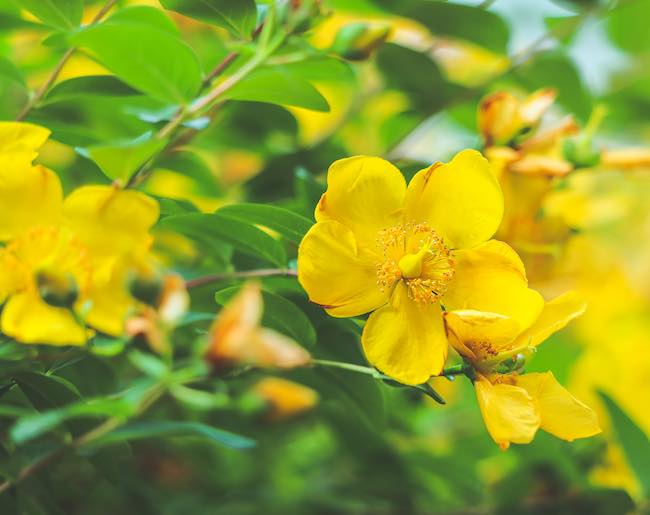
A basic guide to pruning flowering shrubs for shrubs that flower on the current and previous years growth for expert advice contact your GardenAdvice MyGardenTeam advisor
Pruning shrubs that flower on the current year’s growth, such as Hypericum Hidcote, is generally done to encourage new growth and maintain the plant’s shape. Here’s a step-by-step guide on how to prune them after they have finished flowering:
- Timing: Wait until the shrub has finished flowering before pruning. This ensures that you don’t accidentally remove any flower buds for the next season.
- Assess the shrub: Take a good look at the shrub and identify any dead, damaged, or diseased branches. These should be removed first to improve the overall health of the plant.
- Remove older growth: Identify the older, woody branches that are not producing much new growth or flowers. Using your pruners or loppers, prune these branches back to the base or to a healthy lateral branch. By removing the older growth, you’ll encourage the plant to produce new growth and rejuvenate itself.
- Renewal pruning: To create new growth and stems, you can employ a technique called renewal pruning. Identify a few of the oldest branches and cut them down to the ground. This severe pruning stimulates new shoots to emerge from the base of the shrub, resulting in a fresh and vigorous growth.
- Shaping and thinning: As you prune, step back regularly to assess the shape of the shrub. If necessary, selectively prune branches to maintain a desirable shape and ensure adequate air circulation within the shrub. Remove any branches that are crossing, rubbing against each other, or congesting the centre of the plant. Thinning out some of the dense growth can also promote better flowering.

Pruning shrubs that flower on previous years’ growth, such as Forsythia, requires a slightly different approach. Here’s a revised version of the pruning guide specifically for plants that flower on previous years’ growth:
- Timing: Prune after the shrub has finished flowering in early spring. This ensures that you don’t accidentally remove flower buds that have formed for the next season.
- Assess the shrub: Take a careful look at the shrub and identify any dead, damaged, or diseased branches. These should be your first priority for removal as they can hinder the overall health and appearance of the plant.
- Minimal pruning: Unlike shrubs that flower on current year’s growth, plants like Forsythia produce flowers on old wood. As a result, you want to minimise pruning on these older branches. Instead, focus on selective pruning to shape the shrub and remove any unwanted or overcrowded growth.
- Remove crossing and rubbing branches: Look for branches that are crossing or rubbing against each other. These can create wounds and lead to disease or pests. Choose the weaker branch and remove it completely, cutting it back to the point of origin.
- Thinning out dense growth: If your Forsythia is overly dense, selectively thin out some branches to improve air circulation and light penetration within the shrub. This will help promote better flowering and overall health. Remove a few of the older, inward-growing branches to open up the canopy.
Maintain the natural form: Both Forsythia and hypericum hidcote have appealing arching growth habit. When pruning, be mindful of the plant’s natural form and try to maintain its graceful shape. Trim back any branches that are straying too far from the desired outline, but avoid excessive pruning of the older wood that carries the flower buds.




















